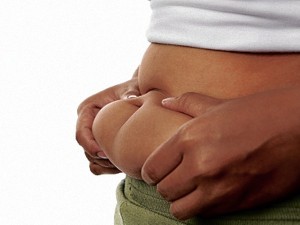Short on time?

IF YOU want to lose belly fat—the most damaging to your health—you will be more successful if you do aerobic exercise than resistant training.
Many people gain weight during the holidays. But as they resolve (once again) this month to lose those excess kilos, they soon realize the enormity of the task considering their back to normal schedule as well as other work-related commitments.
But don’t lose hope.
In the study titled “Effects of aerobic and/or resistance training on body mass and fat mass in overweight or obese adults,” which was published in the December 2012 edition of the Journal of Applied Physiology of the American Physiological Society, holiday bingers would only have to do a few but vigorous aerobic exercises.
In the study, those who (overweight, sedentary adults between the ages of 18 and 70) did vigorous aerobic training—at about 70-85 percent of maximum heart rate—approximately 45 minutes three days per week, lost more weight as well as more fats located around the middle than the group who did only weightlifting exercises (resistance training).
Moreover, fat mass and waist circumference significantly decreased in those who did aerobic exercises (test volunteers used the treadmill and elliptical trainer machines) as well as those who did a mixture of aerobic and resistance training.
Fat mass and waist circumference were not altered in those who did resistance training only and in fact, actually gained weight due to an increase in lean body mass.
Focus on aerobics
The researchers found that those who did only aerobic workouts proved to be as beneficial for losing fat and weight and required only half the time commitment that if one does combination workouts.
As suggested by Leslie Willis, an exercise physiologist at Duke University Medical Center and the study’s lead author, given limited time for exercise, one may focus on aerobic training, which includes swimming, cycling, walking, running and jumping rope.
She added that resistance training may be more appropriate for those whose goal is to increase muscle mass and strength.
Researchers defined “belly fat” as visceral fat, which is found deep in the stomach that surrounds the internal organs, as opposed to subcutaneous fat that is found underneath the skin.
These types of fats that are found around the middle (as opposed those found in the hips and legs and arms) and are being associated to a variety of health problems that could raise the risk for heart disease, diabetes, possibly even dementia and some types of cancer.
In a research published in 2006, doctors concluded that a person’s waist measurement is a more accurate predictor of heart attack than the body mass index, or BMI, which is a weight-to-height ratio.
Scientists found that heart attack sufferers who participated in the study had a much higher waist-to-hip ratio (a measurement that reflects abdominal fat) compared with those who had not, regardless of other cardiovascular risk factors. This finding was true for men and women in every ethnic group.